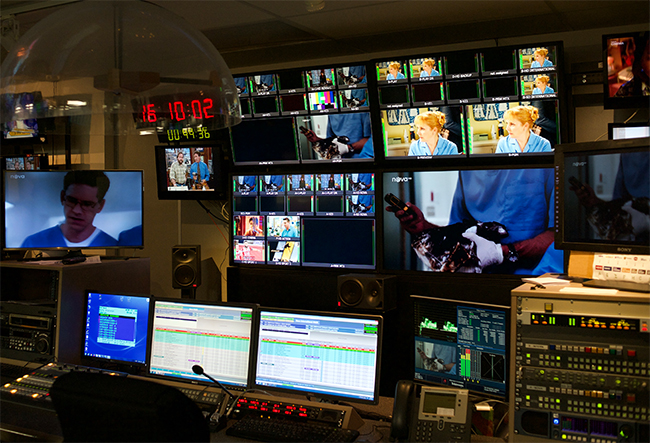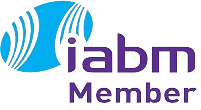MCX AV over IP Distribution and Control
MCX AV over IP Distribution and Control

MCX is a next-generation 4K60 AV-over-IP distribution solution that enables latency-free extension and matrix switching of video, audio, RS-232, and USB 2.0 signals. MCX features built-in video wall management and is TAA-compliant.
MCX allows AV and data payloads to exist on the same IT network and reduces network management time and costs.
The encoders/decoders are ideal for point-to-point secure video conferencing, multi-monitor broadcasts, distributed video matrix or video wall systems, and remote KVM system control.
Easy Setup – Easy Management
Connect each encoder to an AV source (e.g. computer, content player) and connect it to a managed 10-GbE network switch. Connect a decoder to each screen you want to display the content on and connect it to the same switch. Manage your MCX system through the user-friendly MCX Gen2 Network Manager that helps you to configure your system and even build and manage a video wall.
Uncompressed 4K 60 Hz 4:4:4 Video
MCX delivers the video quality high-end AV applications require to display eye-catching content: It extends uncompressed 4K 60 Hz 4:4:4 video to an unlimited number of displays without sacrificing latency, video quality or bandwidth. Even better, it supports up to 10-bit HDR using Software-Defined Video over Ethernet (SDVoE) – the latest software-based AV-over-IP platform for extension and control of AV systems on Ethernet or fiber networks.
Create Ergonomic Workflows for Operators
This video extension system is easy to install and use on a modern network. The units’ front-panel configuration buttons and On-Screen Display (OSD) streamline daily workflows.
Choose Copper or Fiber Versions to Suit Your Application
The encoders/decoders are designed for high-quality, IP routable, AV extension with minimum latency. Fiber and copper versions are available to accommodate for your preferred network infrastructure.
Zero Latency
This robust video distribution system’s data transfer delay is virtually undistinguishable; the glass-to-glass encoding and decoding happens in real-time (0.03 milliseconds). This means you never deal with annoying lag or video delay.
HDMI 2.0 and DisplayPort Encoding and Decoding
You can connect every essential device to your MCX Gen2 through its variety of ports. Multiple control and data signals may also be transmitted along with the audio and video, including IR and RS-232.
3-Port USB with USB-C Connectivity
The integrated USB hub of each decoder (receiver) can be configured to be in ‘USB Host’ or ‘Device Mode’ and can function as a simple point to point AV/KVM extension, freely routed between any two endpoints, or it can be configured into a special “Simultaneous” mode, allowing up to 7 ‘Host Mode’ units to extend their USB ports to a single ‘Device Mode’ unit. This type of USB AV/KVM routing flexibility enables a wide range of multi-user, control room, or on-demand installation scenarios.
Additional Video Out
The system can show the input source on a separate monitor. For example, in a live event, the user can view the source and sample that video on a loop, then pass it down to the network to compare latency.
Works with MCX Gen2 Controller
Combined with the optional MCX Gen2 Controller or control software, the functionality of the encoders/decoders expands exponentially. Multiple encoders/decoders may be combined with one or more 10-Gigabit fiber Ethernet switches and the units can be used together to form a distributed video matrix, a multi-viewer system, or a video wall system adding to their flexibility in large event installations.
Additional information
Related Products:


Live Video Cloud


iCompel® Digital Signage


MediaCento HDMI-over-IP


Spartan™ 7 FPGA Family


MiniDE-4-UHD-II


MiniDE-4-UHD-K


Vela Encompass




T# (Sharp)


Transport & Delivery Monitoring



Live production Multiviewer


Playout Monitoring & Multiviewer


MCX AV over IP Distribution and...



Aperi IP Multiviewer


Versal ™ Prime Series Gen 2...


Versal™ HBM Series FPGAs


TAG-VS Multiviewers


Evertz Multiviewers


Helm


FlexViewer


Stream MultiScreen


BOSS STREAM Viewer


R&S®PRISMON
Live Video Cloud
LTN® Live Video Cloud is an intuitive routing console that streamlines and scales the management of live video, from acquisition to distribution, from any source to every destination — without additional capex.
Break through feed chaos and power innovative video experiences: organize aggregation, monetize publishing, and easily enable remote productions with virtual audience engagement.
With Live Video Cloud, you can acquire unlimited concurrent live feeds from any source, configure productions in minutes, monitor and curate live video within a continuous playback multiview, and distribute live signals simultaneously to unlimited destinations.
Live Video Cloud runs on all major cloud providers worldwide, with intuitive browser-based control accessible from anywhere.
Empower audiences to easily become part of your program, and expand your digital audience reach to earn more top-line ad revenue. Command the future of video with Live Video Cloud.
iCompel® Digital Signage
Your digital signage solution is only as useful as it is usable for your team. Work with our digital signage experts to design and configure the system that meets your communication, business, and team needs. Whether you’re looking to entertain with streaming live video, engage with touchscreens, alert with emergency notifications or inform with wayfinding, you can find the exact players, content management system, and accessories from the comprehensive iCompel® Digital Signage product portfolio.
iCompel® is the ideal digital signage solution for:
• Classrooms & hallways
• Quick-service restaurants
• Retail
• Doctors offices and hospitals
• Corporate office centers
MediaCento HDMI-over-IP
The MediaCento IPX IP-based audio/video distribution solution uses existing standards-based Ethernet technology and TCP/IP protocols to unicast HDMI HD/4K UHD video signals on your Gigabit Ethernet network. In a multicast configuration, one transmitter can drive multiple receivers with no extra network load. Transmitters and receivers install directly into your existing LAN infrastructure. There’s no need to configure any IP settings or run expensive dedicated links from a back room. Better yet, PoE power eliminates the need for external power supplies.
Use the standalone MediaCento IPX Controller with any network switch for full flexibility including dual network, matrix switching, and video wall support, up to 8 x 8 (64 screens).
Spartan™ 7 FPGA Family
The devices feature a MicroBlaze™ soft processor running over 200 DMIPs with 800 Mb/s DDR3 support built on 28 nm technology. Additionally, Spartan 7 devices offer an integrated ADC, dedicated security features, and Q-grade (-40°C to +125°C) on all commercial devices.
MiniDE-4-UHD-II
Supports Deep color and HDCP 1.4 and 2.2 and Dolby Digtal 5.1, DTS 5.1 and uncompressed 7.1.
MiniDE-4-UHD-K
An affordable and high performance entry into 4K/UHD multi-image display for a variety of broadcast and ProAV visual environments including control rooms, digital signage and the like.
Includes a KVM feature whereby KVM and a Multiviewer are working together on a UHD screen.
This MiniDE-4-UHD-K is ideal for displaying up to 4 sources on a single UHD monitor or projector. The added benefit is that users can mix input resolutions and sources all the way up to 4K on a single display.
The MiniDE-4-UHD-K displays up to 4 HDMI computer inputs with keyboard and mouse functions on the same screen. It accepts SD, HD and true UHD/4K @ 60Hz input resolutions. The output resolution can be set for 1280x720p @ 60Hz, 1920x1080p @ 60Hz or 3840x2160p @ 30Hz or 60Hz. All with 4:4:4 color sampling. There are 6 predefined and 8 customized possible screen layouts. PIP and POP modes are also supported. Control and configuration is handled through a web interface, Ethernet, and RS232. As with all Apantac multiviewers, display layout creation is simple and extremely intuitive.
UE-4/8-II
Vela Encompass
Vela Luna
Mi-16-UHD
The addition of UHD outputs to Apantac’s Multiviewers means that facilities now have a cost-effective UHD visual monitoring solution that is much sharper, clearer and more detailed than before.
In comparison to an HD Multiviewer & Display, Apantac’s Multiviewers with UHD outputs mean that the source window PIPs (picture in picture) can be displayed with twice the horizontal number of pixels and twice the number of lines on a UHD panel.
Since UHD monitors are rapidly becoming less expensive, media facilities can use off-the-shelf UHD displays coupled with Apantac’s cost-effective Multiviewers for an inexpensive multi-image display processing solution for many content applications.
T# (Sharp)
Modular multiviewers with mix and match I/O up to 12G support.
The T# Multiviewers provide a uniquely modular and flexible approach that will ensure a future-proof solution for a visual monitoring infrastructure. What makes the T# Multiviewer platform particularly versatile is the fact that it is truly modular supporting a full range of input boards and output boards monitoring signals from Composite to 12G-SDI, UHD, HDMI 2.0, HDMI/DVI, SDI over fiber and IP.
The T# Multiviewer comes in 3 different frame sizes; 1 RU, 2 RU and 4 RU. Since the frames are completely modular, different I/O modules can be inserted to form different sizes and configurations of multiviewers.
All input cards are hot swappable and include:
- 12G SDI broadcast input boards- Standard broadcast input boards- CVBS to UHD input cards- HDMI input cards- IP (H.264/Mpeg4, Mpeg2) input cards- SFP input cards can accept SDI fiber or SMPTE 2022 SFPs
All output cards are hot swappable and include:
- Up to 4 outputs per output board (maximum 2 output boards / 8 outputs)- Standard output cards- Expansion output cards- CATx extender output cards- HDMI and SFP output cards- HDMI 2.0 UHD output cards
Transport & Delivery Monitoring
OTT Monitoring
Live production Multiviewer
Playout Monitoring & Multiviewer
MCX AV over IP Distribution and Control
MCX is a next-generation 4K60 AV-over-IP distribution solution that enables latency-free extension and matrix switching of video, audio, RS-232, and USB 2.0 signals. MCX features built-in video wall management and is TAA-compliant.
MCX allows AV and data payloads to exist on the same IT network and reduces network management time and costs.
The encoders/decoders are ideal for point-to-point secure video conferencing, multi-monitor broadcasts, distributed video matrix or video wall systems, and remote KVM system control.
Easy Setup – Easy Management
Connect each encoder to an AV source (e.g. computer, content player) and connect it to a managed 10-GbE network switch. Connect a decoder to each screen you want to display the content on and connect it to the same switch. Manage your MCX system through the user-friendly MCX Gen2 Network Manager that helps you to configure your system and even build and manage a video wall.
Uncompressed 4K 60 Hz 4:4:4 Video
MCX delivers the video quality high-end AV applications require to display eye-catching content: It extends uncompressed 4K 60 Hz 4:4:4 video to an unlimited number of displays without sacrificing latency, video quality or bandwidth. Even better, it supports up to 10-bit HDR using Software-Defined Video over Ethernet (SDVoE) – the latest software-based AV-over-IP platform for extension and control of AV systems on Ethernet or fiber networks.
Create Ergonomic Workflows for Operators
This video extension system is easy to install and use on a modern network. The units’ front-panel configuration buttons and On-Screen Display (OSD) streamline daily workflows.
Choose Copper or Fiber Versions to Suit Your Application
The encoders/decoders are designed for high-quality, IP routable, AV extension with minimum latency. Fiber and copper versions are available to accommodate for your preferred network infrastructure.
Zero Latency
This robust video distribution system's data transfer delay is virtually undistinguishable; the glass-to-glass encoding and decoding happens in real-time (0.03 milliseconds). This means you never deal with annoying lag or video delay.
HDMI 2.0 and DisplayPort Encoding and Decoding
You can connect every essential device to your MCX Gen2 through its variety of ports. Multiple control and data signals may also be transmitted along with the audio and video, including IR and RS-232.
3-Port USB with USB-C Connectivity
The integrated USB hub of each decoder (receiver) can be configured to be in ‘USB Host’ or ‘Device Mode’ and can function as a simple point to point AV/KVM extension, freely routed between any two endpoints, or it can be configured into a special “Simultaneous” mode, allowing up to 7 ‘Host Mode’ units to extend their USB ports to a single ‘Device Mode’ unit. This type of USB AV/KVM routing flexibility enables a wide range of multi-user, control room, or on-demand installation scenarios.
Additional Video Out
The system can show the input source on a separate monitor. For example, in a live event, the user can view the source and sample that video on a loop, then pass it down to the network to compare latency.
Works with MCX Gen2 Controller
Combined with the optional MCX Gen2 Controller or control software, the functionality of the encoders/decoders expands exponentially. Multiple encoders/decoders may be combined with one or more 10-Gigabit fiber Ethernet switches and the units can be used together to form a distributed video matrix, a multi-viewer system, or a video wall system adding to their flexibility in large event installations.
Utriscape
Key Features:
Software Defined - Easily add new multiviewer outputs through additional software licenses. No additional hardware required.
Integrated Design - Ultriscape can be added to extensive routing, audio processing, and synchronization capabilities to create a completely integrated solution.
Flexible - Each multiviewer head is completely independent, offering tremendous flexibility for layouts and control.
12G Ready - Ultriscape supports inputs from 270Mb/s up to 12G. This means it’s ready for UHD production when you are, without replacing any hardware or losing capacity.
Pay As You Go - The software defined architecture means you simply buy what you need, when you need it
Aperi IP Multiviewer
Multiviewer receives IP video input from three sources: on the leftmost “SFP 1” 10 GbE front panel port, and on the two 10 GbE back plane Ethernet ports. The two 10 GbE backplane Ethernet ports support up to six SMPTE 2022-6 (uncompressed) feeds per port (12 total). The front input supports up to six SMPTE 2022-6 (uncompressed) feeds via the Aperi Uncompressed over IP App.
Multiviewer output is split into a 16 tile HD-SDI for display, forming a 4x4 mosaic which is outputted via HD-SDI on the rightmost front panel “SFP 4” port. Each tile can be labeled to show its multicast address, as well as incorporating dynamically definable and static text.
Each input includes an analyzer, which detects for frozen picture, blank screen, or audio loss from any particular source. If an error is detected, the UI will indicate an issue with that particular tile via the alarm system. This alarm system is available via a common interface, and is exposed in the Multiviewer API.
Technical Information
- Supports up to six SMPTE 2022-6 IP video inputs from the 10 GbE SFP 1 port on an Aperi Microserver.
- Supports up to six SMPTE 2022-6 IP video inputs from each of the 10 GbE backplane Ethernet ports (6 + 6) on the Aperi A1105 Chassis.
- 16-tile 4x4 mosaic display of all video sources, outputted via HD-SDI on SFP 4.
- Support for quick-switching any stream from the 16x16 mosaic into full screen display.
- Full labeling support for each tile, displaying multicast address or user-definable text.
- Detection of frozen picture, blank screen, and audio loss via a common alarm interface.
- Graphical user interface available via HTTPS, accessible via any modern web browser.
- Built upon a RESTful API according to industry best practices, along with full API documentation accessible directly via the Multiviewer UI.
- Included Multiviewer User Guide PDF document packaged with the app, and available directly from the UI.
Versal ™ Prime Series Gen 2 adaptive SoCs
Designed for a broad range of applications including 8K video processing, the Versal Prime Series Gen 2 devices offer expanded hardened IP to complement the programable logic and processing system. This new IP includes hardened video encode & decode, DDR5/LPDDR5X memory controllers, 100G Ethernet, PCIe® Gen5, and an integrated Arm Mali™-G78AE GPU, enabling next-generation applications within tight area & power constraints.
From capturing content and enabling virtual production to creating live events, Versal Prime Series Gen 2 enables Broadcast and Pro AV equipment suppliers to deliver ever more compelling experiences thanks to a unique combination of dedicated acceleration, flexible interfaces, and adaptive computing that’s ideal for real-time video & audio processing.
Each video codec unit (VCU) tile offers:
- Hardened bidirectional encoding, decoding and transcoding
- Support for HEVC & AVC up to 4K60, 4:4:4, 12-bit
- Up to two VCU tiles per device; aggregate both tiles for limited 8k30 support
Versal™ HBM Series FPGAs
With the integration of HBM2e DRAM, the Versal HBM series delivers up to 6X more bandwidth at 65% lower power per bit vs. the Versal Premium series. Built on a production-proven Versal Premium adaptive SoC foundation, the Versal HBM series integrates an extensive set of networked, multi-terabit, power-optimized connectivity cores, and 112 Gb/s PAM4 transceivers to adapt to emerging network protocols and modules. While doubling the transceiver speed, the Versal HBM series secures every layer of the network infrastructure with built-in encryption engines. With the programmable network on chip (NoC), up to 2.2 Tb/s of on-chip connectivity alleviates routing congestion among architectural components. In addition, the Versal HBM series offers twice the logic density of the previous generation HBM solution to maximize performance for constantly evolving algorithms and protocols.
TAG-VS Multiviewers
ST 2110, 2022, SDI
Encoded Linear & OTT
COTS based
PHASE - Serving the Brazilian Television Marker Successfully since 1980
Evertz Multiviewers
ST 2110 & 2022
SDI
Encoded Linear & OTT
PHASE - Serving the Brazilia Television Market since 1980
Helm
Helm, allows the design of a control system dedicated to your operators’ requirements; there’s no clutter of unnecessary controls or information and no risk of confusion between channels as you switch from one manufacturer UI to another. There’s no hunting for the right buttons to press. We can help you design and implement Helm control panels, and you’ll have all the tools to modify and extend them as your requirements change.
BENEFITS
- Totally customisable: All the control you need, none that you don’t
- Smaller footprint: Not all environments have room for multiple hardware panels
- Lower cost: Helm panels run on entry-level PCs, or even on mobile devices via WebCentre
- Faster training: Only one system to learn for new operators
- Enhanced productivity: Simpler interfaces mean operators can work faster and more effectively
- Extend and replace: You can add or change equipment in the facility without impacting operators.
FlexViewer
- Display of various signal inputs such as ASI, IP, SD / HD / 3G-SDI on one screen
- Supports HLS, RF (DVB, ISDBT, QAM) input with additional options
- Convert different input resolution and frame rate, display in a unified output format
- Maximum 45 CH input support for 1 enclosure
- By using multiple chassis, more than 45 CH / 1 screen display is possible
- Input signal loss, black screen, etc detected as an error, notification to the screen
- By voice signal bar, voice input of each input CH can be confirmed
- The size of each signal screen can be freely changed by setting
Application areas
- Monitoring multiple TS, SDI, OTT signals at low-cost monitor monitoring
- Construction of mobile multiviewer using notebook PC
Advanced options
- 4K resolution output
- Cascade processing, input signals of 45 channels or more, 1 screen output supported
- Video output to multiple screens
- Output video signal to other multi viewers TS TS streaming delivery
- Penalty box
- Error notification by SNMP output
- Multilingual voice input support
- Dolby voice codec input support
- Supports HEVC (H.265) input
- 4: 2: 2 Video input support
- Dynamic layout change by the user interface
- Input bit rate display function
Stream MultiScreen
A multiviewer/quality monitoring solution with penalty screen, screen of states, carousel feature and “blind” monitoring for SD/HD-SDI and IP signals
Stream MultiScreen is a software quality monitoring solution. The software can generate a mosaic screen, a screen of states, a penalty screen and non-visual (“blind”) instrumental monitoring capability for analog, SD/HD-SDI and IP sources in any combination. The solution is intended for visual and/or automated quality control and monitoring in Network Operation Centers (NOC), broadcast facilities, Head-ends, content aggregators, TV broadcasters etc... Stream MultiScreen is fully compliant with DVB/MPEG TS ISO 13818-1 streams.
The solution is equipped with a carousel (also called a rotator) feature for monitoring a large set of channels by groups in a round robin manner that can decrease the number of required physical output monitors.
The number of inputs varies and is effectively unlimited. Stream MultiScreen supports feeds from BDA/DirectShow receivers to monitor satellite, cable and terrestrial TV signals. Stream Labs ingest cards may be used to monitor baseband signals coming via SD/HD-SDI, T2-MI and analog interfaces. IP sources are supported including HLS, RTSP, RTMP, MPEG-DASH.
The output mosaic screen can be streamed to a remote PC via HLS. Output is available as HDMI, DVI or DisplayPort. Up to 6 outputs are supported per a server.
The solution supports monitoring and alarming of ETSI TR 101 290 (ETR 290) critical states and QoE degradation such as black screen, still picture, no sound, R.128 parameters etc... Stream MultiScreen can detect user-defined patterns in incoming signals, i.e. “No signal” messages from an IRD/STB.
The solution utilizes Nvidia GPU's and Intel decoding/filtering capabilities, but built-in software decoding is also possible for small and more cost effective installations reducing hardware requirements.
The layout and design of the mosaic screen, penalty screen and screen of states is customizable through the included MultiScreen Designer/Monitor software package.
Stream Labs offers download demo versions, presentations and training videos through their website.
BOSS STREAM Viewer
OTT Streaming - The Dimetis BOSS STREAM Viewer will be able to inspect HTTP Live Streaming (HLS), HTTP Dynamic Streaming (HDS) and Real-Time Messaging Protocol (RTMP).
In the digital video broadcasting and internet worlds, there is a diversity of existing infrastructures for the distribution of DVB, Internet and IPTV. Today’s multiviewer systems must be flexible in the handling of various source formats. The Dimetis BOSS STREAM Viewer can handle DVB conform transport streams over IP and ASI, and SDI uncompressed video in mixed operation in SD and HD.
This scalable system can provide real-time analysis of DVB, content and quality level (blocking and blurring), while decoding and displaying video, audio, teletext and subtitle services. The entire alarming thresholds are configurable and the system is capable of notifying any 3rd party monitoring or management system, such as the Dimetis BOSS BROADCAST ManagerTM, with alerts, problem or quality conditions. Application areas include DVB analysis, content and quality analysis, management of multiple sources, video and audio decoding, teletext decoding and DBV/TXT subtitles. The Dimetis BOSS STREAM Viewer comes “out of the box” and can easily be integrated in broadcaster’s environment as it operates on standard server hardware. With the combination of SDI and DVB signals, BOSS STREAM Viewer is perfect for comparing incoming and outgoing signals on one single screen.
























